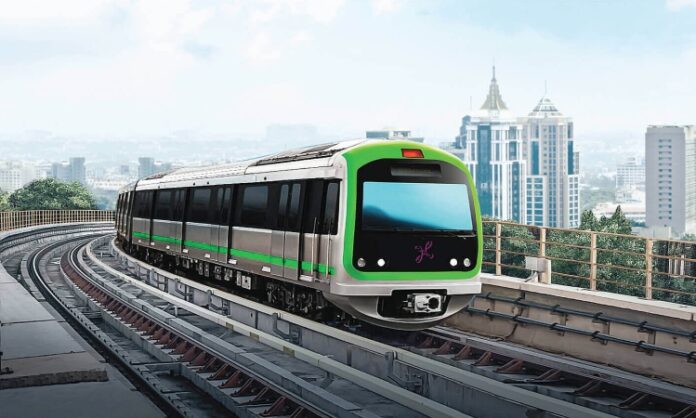Bengaluru: After months of low retention of passengers, the ridership in Bengaluru metro is maintaining a rising since May this year, thanks to business returning to normal after the Covid pandemic and increased length of metro rail operation in the city.
The metro rail ridership had suffered due to outbreak of pandemic and the Bangalore Metro Rail Corporation’s (BMRCL) decision to reduce the price on smart cards till the last few months. While the ridership numbers in January 2020 was just at 4 lakh commuters opting for metro services daily, even during post pandemic the numbers hovered around 3.22 lakh passengers daily.
However, recently the BMRCL achieved 5 lakh plus ridership in a single day. It fetched the metro around ₹1.4 crore earnings. As per the reports by the BMRCL earned ₹36.66 crores in the month of August. The reason being that on August 15, the ridership was 8.3 lakh including Purple Line (2.5 lakh), Green Line (4.02 lakh) and Majestic interchange (1.6 lakh).
“Yes, compared to the previous years the ridership in August has turned into the highest zone. There are different elements for expanded ridership. The vast majority of the IT organisations have called their workers to the workplace space. Additionally the Congress party had purchased nearly one lakh paper tickets for its party workers participating in the rally in August,” said a commuter.
Also Read: Bangalore metro to launch QR-based ticketing system next month
The BMRCL had additionally presented paper tickets for individuals heading out from Lalbagh station to various other places on August 15. We witnessed huge rush on this day at the Metro stations like Public School, Lalbagh, Vidhana Soudha, Nagasandra, and Grand. Additionally, a large portion of the workers are compelled to choose the metro administrations in light of the increase in the cost of fuel,” said a BMRCL official.
The BMRCL has an operational network of 55 km, of which 13 km were added in recent days by opening two lines (Purple Line from Mysuru Road Station to Kengeri) and (Green Line from Yelachenahalli to Silk Institute). The number of operational metro stations on both the lines have been increased from 41 stations to 52 stations.
Also Read: Bangalore startups upbeat, as engineers feel safe from layoffs
“In January, 96.5 lakh individuals utilised the metro services, which surged to 1.09 crore in the month of April. In May we had a ridership of 1.26 crore, which got us the revenue of ₹31.43 crore. Almost everyday we earned ₹1 crore. In June a total of 1.38 crores people used the service with a record of ₹34.01 crore revenue, and it jumped to 1.45 crore in July, while the revenue went to Rs 35.62 crore. As many as 62% of passengers use smart cards to travel, while 38 % use tokens,” another official said.
The BMRCL records say that it is operating 146 trips of trains on the Purple Line and 141 on the Green Line.
BMRCL ridership of last four months
| Months | Total Ridership | Revenue |
| May-2022 | 1.26 Cr | 31.45 Cr |
| June -2022 | 1.38 Cr | 34.01 Cr |
| July-2022 | 1.45 Cr | 35.62 Cr |
| August-2022 | 1.52 Cr | 36.66 Cr |




